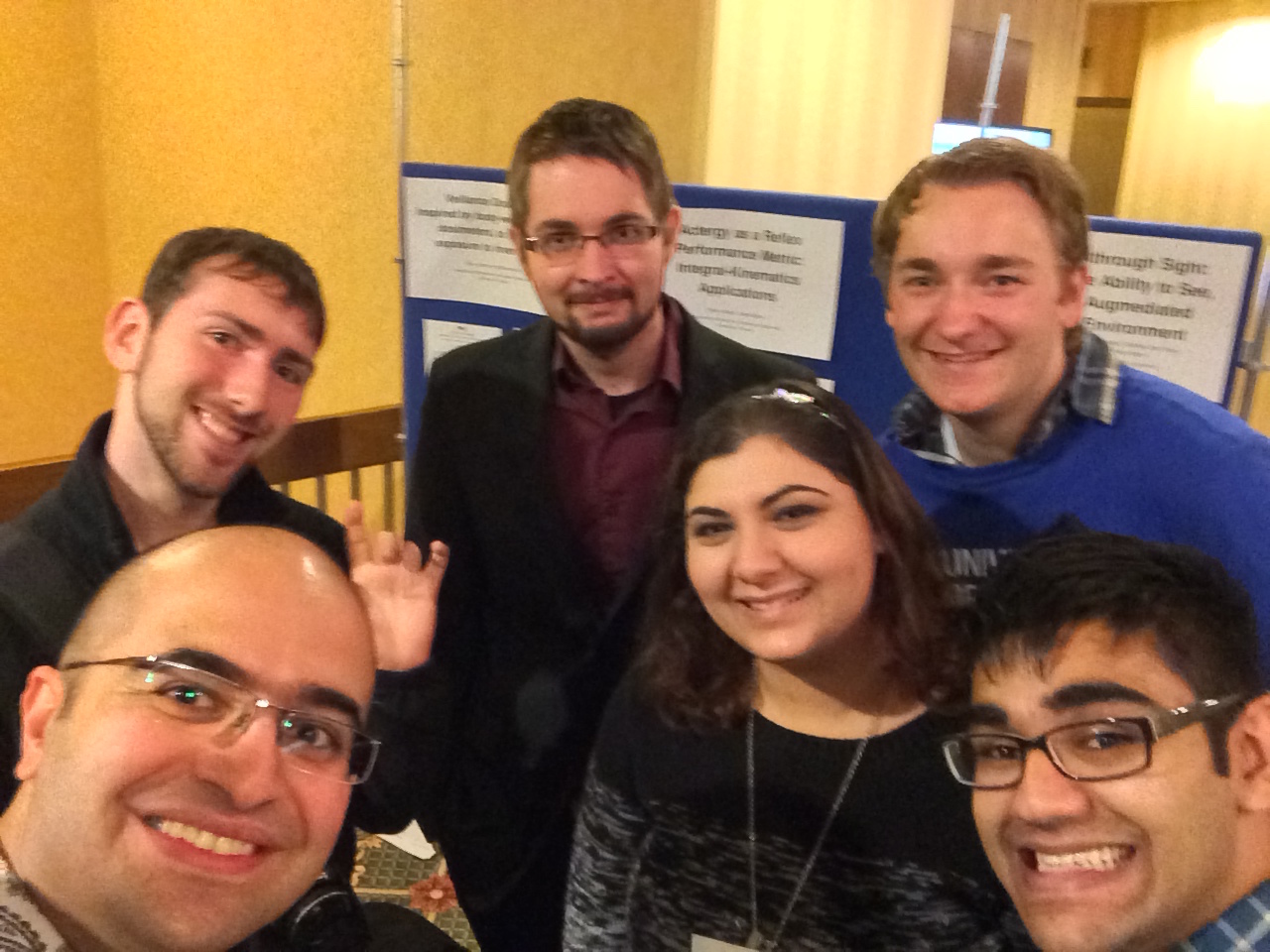For the first time this year, prestigious game researchers and designers from all over the world gather for an international conference exploring new developments in gaming technology and research applications. The conference, entitled Computer-Human Interaction in Play or CHI PLAY, was held in Toronto this past week. We are proud to announce that CHI PLAY 2014, chaired by UOIT’s own Dr. Lennart Nacke, was a resounding success.
Throughout the conference, a great deal of exciting new research was brought to the attention of the scientific community, including a number of projects involving the talented members of the UOIT Game Development faculty. These projects covered a diverse spectrum of research applications, summarized in the papers presented at CHI PLAY.
Introducing a Biometric Storyboards Tool for Games User Research, co-authored by Dr. Nacke and Dr. Mirza-Babaei, examines the use of physiological measurements combined with subjective player experience reports in the field of user research. Essentially, the project proposes an integrated system that uses both quantitative (i.e. physical numerical data, such as monitoring the neural activity of players) and qualitative (i.e. player questionnaire) measures to create a unified analysis of player experience. This analysis is incredibly useful to game designers, as it streamlines the evaluative aspects of the iterative design process.
Acrophobia treatment by in vivo CAVE exposure, by James Robb, João Costa, and Lennart Nacke, studies the use of virtual reality technologies combined with motion tracking as a possible treatment for the fear of heights. Throughout the course of the project, many novel combinations of these emerging technologies were developed in the creation of an immersive, game-like application, which can be used effectively as a therapeutic tool to simulate the effect of ‘live’ acrophobic treatment while avoiding the potential dangers arising from the exposure of patients to high altitudes.
Design Guidelines for Gamifying Reading Applications, by Rina Wehbe, James Robb, Jessica Clarke, João Costa, and Lennart Nacke, investigates the potential ability of gamification to motivate individuals to read. The paper suggests a number of ways in which a strong sense of tangible progress and social connectivity can be introduced into the act of reading, through the application of game design principles. Thusly, the research concludes that the literacy of the population can be effectively bolstered through the development of gamified reading.
Developing Iconic and Semi-Iconic Game Controllers, by Lennart Nacke, João Costa, Dennis Kappen, James Robb, and Daniel Buckstein, puts forth the distinction between various levels of representationalism in the creation of video game controllers. Through the investigation of a number of control schemes, the paper evaluates the effectiveness of controllers which physically mimic the manipulation of in-game elements to varying degrees of fidelity. [Paper PDF]
The Edge of Glory: The Relationship between Metacritic Scores and Player Experience, by Daniel Johnson, Christopher Watling, John Gardner, and Lennart Nacke, compares the apparent quality of a game as described by professional critic reviews with that suggested by the experiences of players. Commonalities and divergences between key aspects of each evaluation method are analyzed in order to clarify the means by which we judge games. [Paper PDF]
Engaged By Boos and Cheers: The Effect of Co-Located Game Audiences on Social Player Experience, by Dennis Kappen, Pejman Mirza-Babaei, Jens Johannsmeier, Daniel Buckstein, James Robb, and Lennart Nacke, looks at the effects of spectatorship upon player experience. The paper concludes that the presence of an active audience, whether providing acclaim or criticism, benefits player engagement and experience. [Paper PDF]
Understanding Expectations with Multiple Controllers in an Augmented Reality Videogame, by Pejman Mirza-Babaei, Nathan Gale, João Costa, Lennart Nacke, and Daniel Johnson, explores the challenges of developing intuitively functional and novel peripherals for games. Specifically, the paper examines the ways in which players react and adapt to the use of the PlayStation Wonderbook and Move controllers, devices which facilitate player immersion through the use of augmented reality technology. [Paper PDF]
Industry representatives from developers such as Ubisoft also attended the conference, delivering a number of fascinating presentations regarding their past and present work. Thusly, CHI PLAY served to unify the contributions of the scientific, design, and industrial communities and propel the field of gaming forward in a tremendous way.
The conference also hosted a number of workshops for students and designers to test and develop their game design abilities. Several UOIT students took part in the Game Idea Jam for Sport and Exertion Games, honing their skills in brainstorming and prototyping diverse game concepts.
True to form, CHI PLAY also brought participants together in the spirit of fun, as academics, designers, and students alike were inspired to continue their work in the fields of game research and design.
Check out the hashtag #chiplay on Twitter to see some of the most interesting highlights, and even witness UOIT’s finest having some fun at the conference.



Leave a Reply